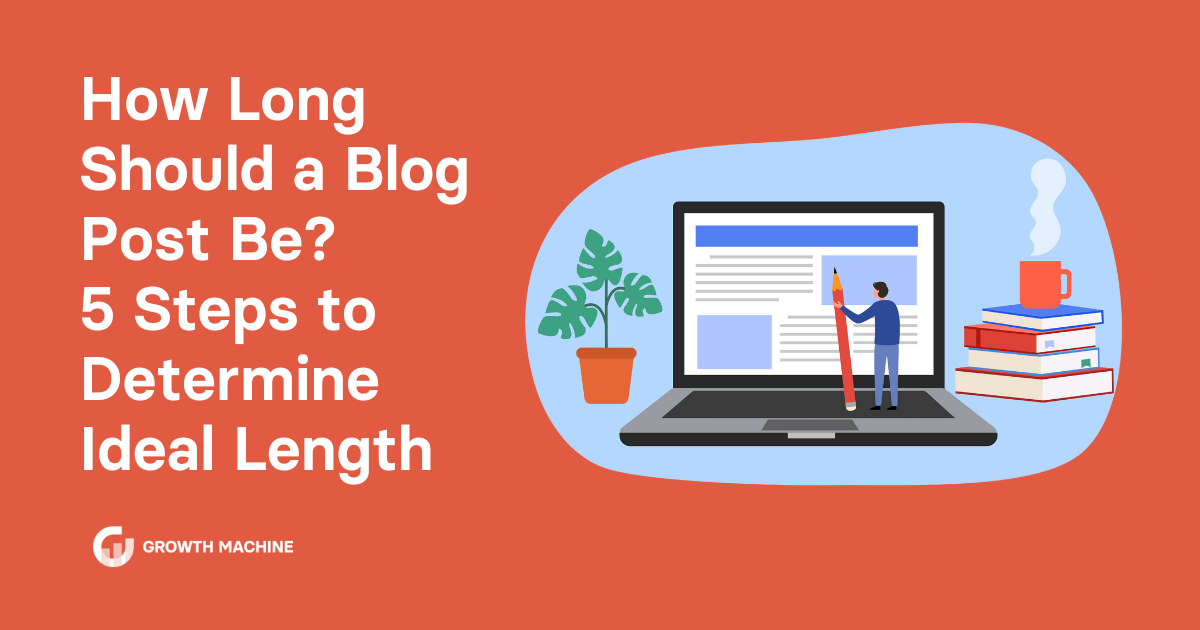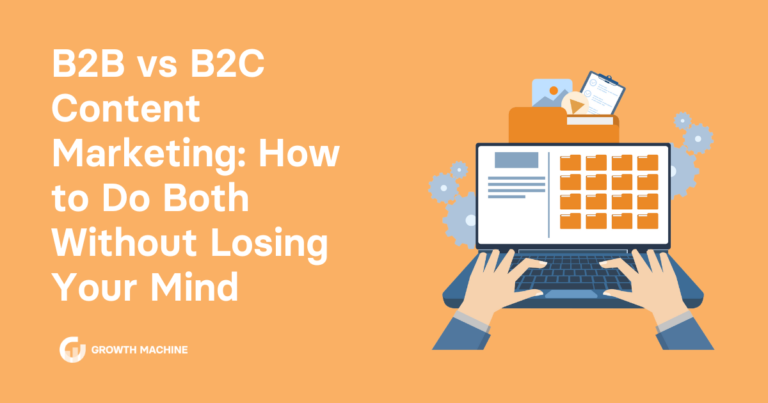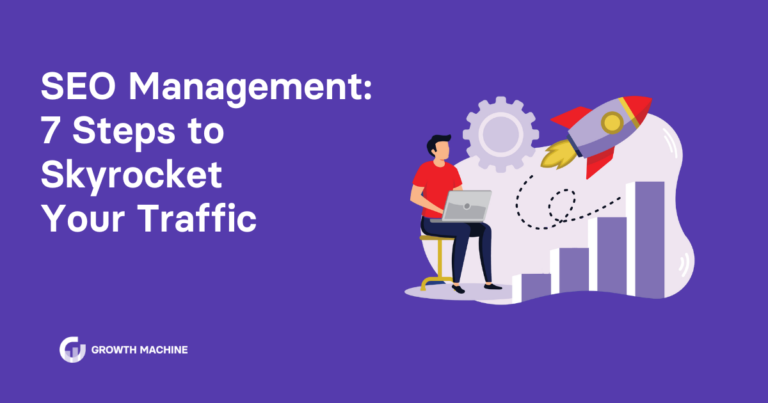How Long Should a Blog Post Be? 5 Steps to Determine Ideal Length
As a blogger, it’s likely that the question of “how long should a blog post be” has crossed your mind (or Google search history) at some point or another. But does the perfect word count exist, and how do you know if you’ve found it?
We won’t deny that the length of a blog post plays a role in its success. A blog post that’s too short or doesn’t provide enough information or value to readers can leave them unsatisfied and unlikely to return, while articles that are too long-winded might overwhelm your readers.
Nailing the length of your blog posts ensures that your audience gets the answers they’re looking for, and will keep them coming back to your site time and time again.
So how do you make sure that your blog lengths fall into that sweet spot? It all comes down to understanding your audience, covering your topic in enough depth, and delivering value that meets your readers’ expectations.
In this comprehensive guide, we’ll unpack everything you need to know to find the blog post length that resonates with your audience, attracts more organic traffic, and ultimately, drives better outcomes for your business.
Average Blog Post Lengths for 2023: Trends and Insights
So, how long should a blog post be in 2023? The number one thing you want to consider when answering this important question is the quality of your content. Never underestimate the power of a well-structured, engaging piece of content.
Why Specific Word Counts Don’t Always Matter
A rule we like to play by when creating blog posts for our clients is quality over quantity. Creating high-quality, long-form blog posts that deliver significant value to your readers will trump specific word counts every time.
And we’ve got the data to back it up. A 2021 survey conducted by Semrush found that when marketers were asked which tactic helped to make their content strategy more successful, 55% said that improving the quality of their content made the biggest impact.
Creating high-quality content can look different for everyone, but generally, you want to consider these three factors:
- The topic: Are you covering it in enough detail?
- The format: Is the article structured in a way that grabs and holds your audience’s attention?
- The industry your business is in: How does your content quality compare to your competitors and is the content relevant to your niche?
The perks of creating high-quality, value-packed content don’t end at the reader experience. Search engines like Google also consider length as an important factor when ranking content.
By optimizing the length of your blog posts for SEO, you can improve your brand’s visibility in search engine results pages (or SERPs), which means greater visibility for your business and more people visiting your website.
At Growth Machine, we put every article we publish through a rigorous SEO audit to make sure it’s long enough and contains the right keywords to do its job — bringing more customers to your site.
So instead of focusing on a magic word count, focus on value first, then let the length follow.
2023 Content Trends: What Data Says About the Perfect Blog Post Length
A quick peruse of today’s industry trends reveals that longer articles that cover topics in depth tend to attract more organic traffic and backlinks than shorter articles.
The ideal blog post length contains an average word count of 1,000-2,000 words. This length appears to be the sweet spot for maximizing social media shares.
This raises an important question about long-form content: How can you make sure you’re covering your topic in enough detail, without losing your audience’s attention? Consumers have increasingly short attention spans and want answers at their fingertips within seconds. You have to get a bit creative to keep peoples’ interest.
The way people are consuming content has changed as well — many of today’s users are reading blog posts on mobile devices or using technology like voice search to find answers quickly. If you can’t adapt your user experience to keep up with these changes, you risk losing your readers to a competitor who will.
One way to tackle these changes in the way longer content is consumed is to make your content more digestible. This is supported by an increase in the popularity of list style posts, with listicles getting an average of 218% more shares than how-to posts and 204% more shares than infographics.
Here’s how to make content digestible:
- Turn your content into a numbered list
- Use short paragraphs (1-3 sentences)
- Utilize catchy headings to hook readers
- Add photos and graphics throughout
- Use H2 and H3 tags for headers
- Insert a clickable table of contents
- Add bulleted lists
- Highlight key information as pull quotes
- Add links
The takeaway? Identify the questions that people are searching for, organize your blog articles with clear answers to those questions, and structure them in a way that readers can find what they’re looking for. Trust us: Your readers (and search engines) will reward you for it.
5 Ways to Decide How Long a Blog Should Post Be
We’ve already debunked the myth that there’s a perfect answer to the question of how long a blog post should be.
That said, there are still a few handy guidelines to help you determine what word count to aim for.
1. Purpose and Goals of the Blog Post
Generally, your blog posts will serve one of four purposes for your audience:
- To inform
- To educate
- To entertain
- To persuade
Based on which of these goals is the driving force behind your content, the depth and length of your post will vary.
Content that is informational or educational in nature will typically run up a longer word count than blog posts that are intended to entertain or persuade your audience. For instance, an in-depth legal guide for startups will likely require a higher word count than a short, informational post announcing new software features.
Another thing to keep top of mind is your customer journey. People who are in the later stages of the customer journey and are ready to buy typically need less guidance and nurturing than those who are learning about your business for the first time.
Adding that valuable context and building trust takes time (and more words), so don’t be afraid to put in the work with longer content at those early states of your marketing funnel.
2. Keyword Research and Search Volume
Once you have a keyword or topic in mind for a blog post, run a quick Google search for that keyword to see which pieces of content appear at the top. Google will also reveal related keywords via the People Also Search For feature that you can use to narrow in on user search intent.
Next, consider why someone would type this search phrase into Google. This is called the search intent. Would your ideal customer be looking for a step-by-step tutorial, a comparison, or something else?
Aside from choosing the perfect keyword to match your audience’s intent, you need to make sure that you’ll actually be able to rank for it. We’ve seen many talented content marketers make the mistake of targeting a keyword that’s way too high in competition, leaving their content efforts to go to waste.
Keyword research tools like Google’s Keyword Planner, Ahrefs, or Moz can provide valuable insight into things like search volume and keyword difficulty.
Avoid keywords that are too broad or general in nature. At Growth Machine, we tend to prioritize long-tail keywords, which are more specific and typically have lower search volumes. This ensures that we can create long-form content that provides solutions to specific problems.
If you do decide to target a more competitive keyword, you’ll often see longer, more comprehensive blog posts at the top of the SERPs. To surpass those authors’ efforts, you’ll need to create detailed, high-quality content that provides more depth or adds something new to the topic that hasn’t been covered previously.
3. Target Audience and Reader Preferences
It doesn’t matter how great your content is if nobody’s reading it. That’s why understanding your audience’s preferences and reading habits are so key. For instance, let’s say your target customer is a busy professional who loves quick tips and practical advice. To keep things short and sweet, you might opt for a blog post with “10 Time-Saving Productivity Hacks.” Your readers will appreciate the efficiency as they read it over their morning coffee or scan the article between meetings.
Double check that you’re covering your topic in enough detail for different segments of your audience. Not everyone who comes across your blog will have the same level of base knowledge on a given topic.
Generally, we find it better to stick to longer, scannable blogs in case readers want to learn more, rather than risk losing them because they couldn’t find what they were looking for. A little extra detail in your blogs never hurts, especially if you want to attract more backlinks and shares.
The final thing to consider when it comes to your audience is that not everyone processes information the same way. Experiment to see what works best for your audience. Visual learners might resonate with a helpful graphic, while more auditory learners might enjoy a snippet of video or an excerpt from a podcast. Tapping into these different mediums can really accelerate your blog’s performance and propel you to the top of the SERPs.
4. Competitor Analysis and Industry Standards
If you’re feeling a little lost when it comes to how long a blog post should be, it never hurts to take a quick peek at what the competition is doing.
The articles that dominate the SERPs are a great starting point for your own content research and planning. Examine each article to see how long they are and the style they’re written in, making note of things like titles, headings, subheadings, and format.
Even more important than length, pay attention to the depth and comprehensiveness of each top-ranking article. Are they providing in-depth analysis of the topic, step-by-step instructions, or quick tips and tricks?
Depending on the nature of your business and the topics you write about in your blog, there’s a good chance that your content will be a bit of a mix.
We aren’t saying you always have to do exactly what the competition is doing either. Sometimes it pays to stand out and offer your audience something different.
Let’s say several of your competitors are writing 2,000-word guides on social media marketing. You might decide to go against the grain and create a beautifully designed infographic with quick tips that are highly shareable.
For convenience, there are tons of free word count tools out there that can count the words on any webpage, and even give you the top keywords. One such tool is Article Word Counter, a Google Chrome Extension that can easily be accessed right from your browser.
5. Analytics and Feedback for Different Content Lengths
When it comes to determining your perfect blog length, data is your friend. Check out metrics like organic sessions and keyword rank to see how engaged users are with your content and the exact moment you’re losing them. Use that data to aid in your future content planning.
Don’t be afraid to go back and optimize your existing content. You can always enhance your blog content to better meet your audience’s needs by removing sections that users don’t seem to resonate with and adding in up-to-date information.
Another great way to get a pulse on your audience’s preferences is to listen to what your readers are saying on social media. Are your articles racking up social shares? Are people citing them or talking about your content online? If not, it might be a sign that you need to add more value or choose a different topic that resonates better.
Lastly, don’t be afraid to experiment! If you’re constantly serving your audience 3,000-word articles, why not switch it up with a shorter list-style piece or an engaging infographic?
Brands that aren’t afraid to try new things tend to come out on top. Switching things up can attract searchers to your content who might not have found it before.
Plus, long-form content is the best way to build a loyal following over time. if your audience comes to know you as a one-stop shop for content, it gives them less reason to go elsewhere. That means more time spent on your site and a deeper level of trust built with your brand.
Always Prioritize Blog Post Value Over Word Counts
Instead of asking, “How long should a blog post be?” your best bet is to ask, “How can I create content that serves my audience better?”
By keeping user experience and content quality top of mind, you’ll be able to create content that resonates with your target audience every time. Prioritizing user needs over rigid word count guidelines pays off every time, and will be reflected in your performance analytics.
Or better yet — stop stressing about how long your blog posts should be and leave it to the pros. Growth Machine’s thorough content research process ensures that your content is optimized for length, readability, and user experience, all without you lifting a finger.
Contact us today to learn how we can help you create content that will improve your search rankings and drive more organic traffic for your business.







